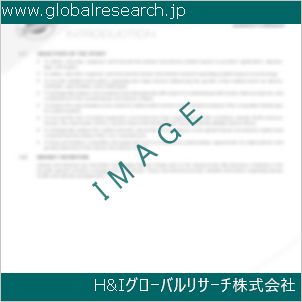Table of Contents
1 Industry Overview of Cyanogen
1.1 Definition and Specifications of Cyanogen
1.1.1 Definition of Cyanogen
1.1.2 Specifications of Cyanogen
1.2 Classification of Cyanogen
1.3 Applications of Cyanogen
1.3.1 Nuclear Application
1.3.2 Non-Nuclear Application
1.4 Industry Chain Structure of Cyanogen
1.5 Industry Overview and Major Regions Status of Cyanogen
1.5.1 Industry Overview of Cyanogen
1.5.2 Global Major Regions Status of Cyanogen
1.6 Industry Policy Analysis of Cyanogen
1.7 Industry News Analysis of Cyanogen
2 Manufacturing Cost Structure Analysis of Cyanogen
2.1 Raw Material Suppliers and Price Analysis of Cyanogen
2.2 Equipment Suppliers and Price Analysis of Cyanogen
2.3 Labor Cost Analysis of Cyanogen
2.4 Other Costs Analysis of Cyanogen
2.5 Manufacturing Cost Structure Analysis of Cyanogen
2.6 Manufacturing Process Analysis of Cyanogen
3 Technical Data and Manufacturing Plants Analysis of Cyanogen
3.1 Capacity and Commercial Production Date of Global Cyanogen Major Manufacturers in 2023
3.2 Manufacturing Plants Distribution of Global Cyanogen Major Manufacturers in 2023
3.3 R&D Status and Technology Source of Global Cyanogen Major Manufacturers in 2023
3.4 Raw Materials Sources Analysis of Global Cyanogen Major Manufacturers in 2023
4 Capacity, Production and Revenue Analysis of Cyanogen by Regions, Types and Manufacturers
4.1 Global Capacity, Production and Revenue of Cyanogen by Regions 2019-2024
4.2 Global and Major Regions Capacity, Production, Revenue and Growth Rate of Cyanogen 2019-2024
4.3 Global Capacity, Production and Revenue of Cyanogen by Types 2019-2024
4.4 Global Capacity, Production and Revenue of Cyanogen by Manufacturers 2019-2024
5 Price, Cost, Gross and Gross Margin Analysis of Cyanogen by Regions, Types and Manufacturers
5.1 Price, Cost, Gross and Gross Margin Analysis of Cyanogen by Regions 2019-2024
5.2 Price, Cost, Gross and Gross Margin Analysis of Cyanogen by Types 2019-2024
5.3 Price, Cost, Gross and Gross Margin Analysis of Cyanogen by Manufacturers 2019-2024
6 Consumption Volume, Consumption Value and Sale Price Analysis of Cyanogen by Regions, Types and Applications
6.1 Global Consumption Volume and Consumption Value of Cyanogen by Regions 2019-2024
6.2 Global and Major Regions Consumption Volume, Consumption Value and Growth Rate of Cyanogen 2019-2024
6.3 Global Consumption Volume and Consumption Value of Cyanogen by Types 2019-2024
6.4 Global Consumption Volume and Consumption Value of Cyanogen by Applications 2019-2024
6.5 Sale Price of Cyanogen by Regions 2019-2024
6.6 Sale Price of Cyanogen by Types 2019-2024
6.7 Sale Price of Cyanogen by Applications 2019-2024
6.8 Market Share Analysis of Cyanogen by Different Sale Price Levels
7 Supply, Import, Export and Consumption Analysis of Cyanogen
7.1 Supply, Consumption and Gap of Cyanogen 2019-2024
7.2 Global Capacity, Production, Price, Cost, Revenue, Supply, Import, Export and Consumption of Cyanogen 2019-2024
7.3 USA Capacity, Production, Price, Cost, Revenue, Supply, Import, Export and Consumption of Cyanogen 2019-2024
7.4 EU Capacity, Production, Price, Cost, Revenue, Supply, Import, Export and Consumption of Cyanogen 2019-2024
7.5 China Capacity, Production, Price, Cost, Revenue, Supply, Import, Export and Consumption of Cyanogen 2019-2024
7.6 Japan Capacity, Production, Price, Cost, Revenue, Supply, Import, Export and Consumption of Cyanogen 2019-2024
8 Major Manufacturers Analysis of Cyanogen
8.1 Manufacturer One
8.1.1 Company Profile
8.1.2 Product Picture and Specifications
8.1.2.1 Type I
8.1.2.2 Type II
8.1.2.3 Type III
8.1.3 Capacity, Production, Price, Cost, Gross and Revenue
8.1.4 Contact Information
8.2 Manufacturer Two
8.2.1 Company Profile
8.2.2 Product Picture and Specifications
8.2.2.1 Type I
8.2.2.2 Type II
8.2.2.3 Type III
8.2.3 Capacity, Production, Price, Cost, Gross and Revenue
8.2.4 Contact Information
8.3 Manufacturer Three
8.3.1 Company Profile
8.3.2 Product Picture and Specifications
8.3.2.1 Type I
8.3.2.2 Type II
8.3.2.3 Type III
8.3.3 Capacity, Production, Price, Cost, Gross and Revenue
8.3.4 Contact Information
8.4 Manufacturer Four
8.4.1 Company Profile
8.4.2 Product Picture and Specifications
8.4.2.1 Type I
8.4.2.2 Type II
8.4.2.3 Type III
8.4.3 Capacity, Production, Price, Cost, Gross and Revenue
8.4.4 Contact Information
8.5 Manufacturer Five
8.5.1 Company Profile
8.5.2 Product Picture and Specifications
8.5.2.1 Type I
8.5.2.2 Type II
8.5.2.3 Type III
8.5.3 Capacity, Production, Price, Cost, Gross and Revenue
8.5.4 Contact Information
…
9 Marketing Trader or Distributor Analysis of Cyanogen
9.1 Marketing Channels Status of Cyanogen
9.2 Traders or Distributors with Contact Information of Cyanogen by Regions
9.3 Ex-work Price, Channel Price and End Buyer Price Analysis of Cyanogen
9.4 Regional Import, Export and Trade Analysis of Cyanogen
10 Industry Chain Analysis of Cyanogen
10.1 Upstream Major Raw Materials Suppliers Analysis of Cyanogen
10.1.1 Major Raw Materials Suppliers with Contact Information Analysis of Cyanogen
10.1.2 Major Raw Materials Suppliers with Supply Volume Analysis of Cyanogen by Regions
10.2 Upstream Major Equipment Suppliers Analysis of Cyanogen
10.2.1 Major Equipment Suppliers with Contact Information Analysis of Cyanogen
10.2.2 Major Equipment Suppliers with Product Pictures Analysis of Cyanogen by Regions
10.3 Downstream Major Consumers Analysis of Cyanogen
10.3.1 Major Consumers with Contact Information Analysis of Cyanogen
10.3.2 Major Consumers with Consumption Volume Analysis of Cyanogen by Regions
10.4 Supply Chain Relationship Analysis of Cyanogen
11 Development Trend of Analysis of Cyanogen
11.1 Capacity, Production and Revenue Forecast of Cyanogen by Regions and Types
11.1.1 Global Capacity, Production and Revenue of Cyanogen by Regions 2024-2029
11.1.2 Global and Major Regions Capacity, Production, Revenue and Growth Rate of Cyanogen 2024-2029
11.1.3 Global Capacity, Production and Revenue of Cyanogen by Types 2024-2029
11.2 Consumption Volume and Consumption Value Forecast of Cyanogen by Regions, Types and Applications
11.2.1 Global Consumption Volume and Consumption Value of Cyanogen by Regions 2024-2029
11.2.2 Global and Major Regions Consumption Volume, Consumption Value and Growth Rate of Cyanogen 2024-2029
11.2.3 Global Consumption Volume and Consumption Value of Cyanogen by Types 2024-2029
11.2.4 Global Consumption Volume and Consumption Value of Cyanogen by Applications 2024-2029
11.3 Supply, Import, Export and Consumption Forecast of Cyanogen
11.3.1 Supply, Consumption and Gap of Cyanogen 2024-2029
11.3.2 Global Capacity, Production, Price, Cost, Revenue, Supply, Import, Export and Consumption of Cyanogen 2024-2029
11.3.3 USA Capacity, Production, Price, Cost, Revenue, Supply, Import, Export and Consumption of Cyanogen 2024-2029
11.3.4 EU Capacity, Production, Price, Cost, Revenue, Supply, Import, Export and Consumption of Cyanogen 2024-2029
11.3.5 China Capacity, Production, Price, Cost, Revenue, Supply, Import, Export and Consumption of Cyanogen 2024-2029
11.3.6 Japan Capacity, Production, Price, Cost, Revenue, Supply, Import, Export and Consumption of Cyanogen 2024-2029
12 New Project Investment Feasibility Analysis of Cyanogen
12.1 New Project SWOT Analysis of Cyanogen
12.2 New Project Investment Feasibility Analysis of Cyanogen
13 Conclusion of the Global Cyanogen (CAS 460-19-5) Industry 2024 Market Research Report
| ※参考情報 シアノゲン(Cyanogen)は、化学式 C2N2 で表される無機化合物であり、CAS番号は 460-19-5 です。シアノゲンは、無色で刺激臭のある気体であり、毒性が高く、取り扱いには注意が必要です。この物質は、小さな分子構造を持ち、一般的にはその反応性のために注目されています。シアノゲンは、いくつかの異性体を持つため、さまざまな反応に関与します。 その特徴として、まず注目すべきはその高い反応性です。シアノゲンは酸化剤や還元剤と反応し、様々な生成物を形成します。特に、アルコールやアミンと反応することで、シアノヒドリンと呼ばれる化合物を生成することができます。これにより、シアノゲンは有機合成反応において重要な役割を果たします。 シアノゲンの生成方法は主に二つあります。一つは、シアン化カリウムと塩素ガスの反応によって得る方法であり、もう一つは、アセトニトリルに酸化剤を加えて反応させることで生成する方法です。どちらの方法も、取り扱いに際して適切な安全対策を講じる必要があります。 用途としては、シアノゲンは主に化学合成の中間体として用いられます。有機合成において、シアノゲンはシアニド化反応やシアノヒドリン形成に利用され、様々な化合物の合成に寄与しています。また、シアノゲンはまた、薬理学的な研究や農薬の合成にも利用されています。その毒性により、シアノゲンは取扱いの際に高度な注意が求められ、適切な保護具を着用することが必須です。 関連技術では、シアノゲンはその反応性により合成化学や材料科学において重要な役割を果たします。特に、一部の高分子材料やナノ材料の製造プロセスにおいて、シアノゲンが反応の起点となることがあります。シアノゲンを含む化合物は、薬剤の開発においても重要な役割を果たすことがあり、例えば抗がん剤の開発や特定の病気の治療に向けた研究が進められています。 一方で、シアノゲンには毒性があり、取り扱いには以下のような注意点が存在します。シアノゲンを吸引することにより、急性中毒を引き起こす可能性があり、特に高濃度のシアノゲンにさらされると、神経系や呼吸器系に重篤な影響を及ぼすことがあります。そのため、研究室や工場などでシアノゲンを扱う際には、必ず適切な換気、保護具の着用、教育を受けたスタッフによる管理が求められます。 シアノゲンの環境への影響も考慮する必要があります。大気中に放出されたシアノゲンは、環境中の水質や土壌に悪影響を及ぼす可能性があるため、その取り扱いや廃棄方法についても十分な配慮が必要です。特に、産業廃棄物としてシアノゲンを含む物質を適切に処理しなければ、周囲の環境に深刻な影響を与える恐れがあります。 このように、シアノゲンは様々な化学プロセスにおいて重要な役割を果たしている一方で、その高い毒性により取り扱いには厳重な注意が求められる化合物です。研究者や化学者は、その反応の特性を最大限に活かしつつ、安全な作業環境を整えるための知識と技術を身につけることが必要です。シアノゲンに関する研究は今後も続き、その特性を利用した新しい化合物の開発や応用が期待されています。 |
❖ 免責事項 ❖
http://www.globalresearch.jp/disclaimer












